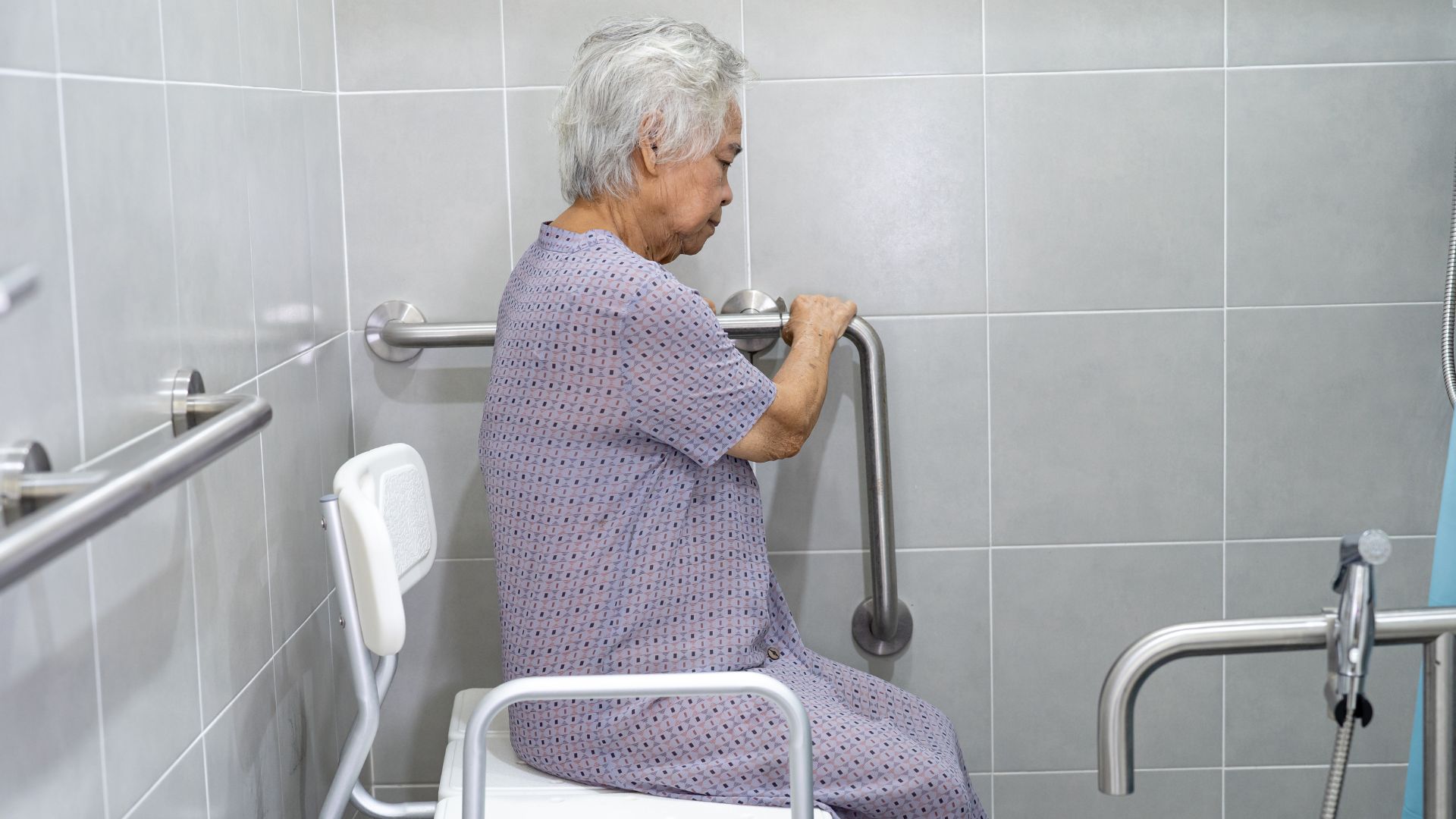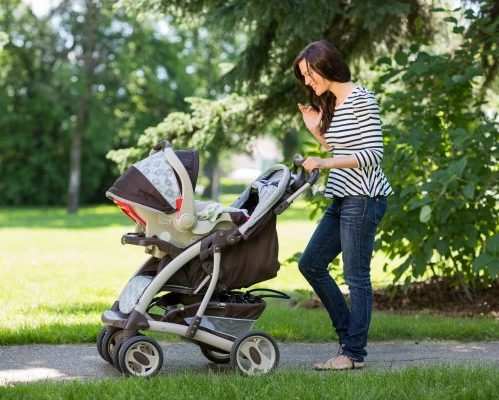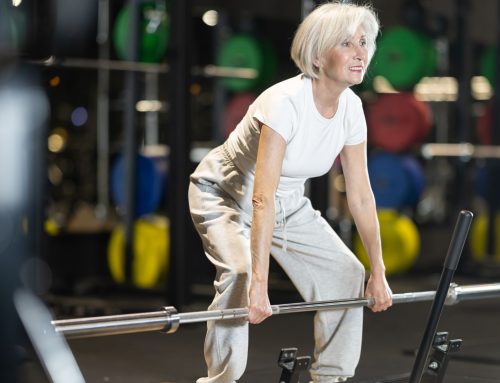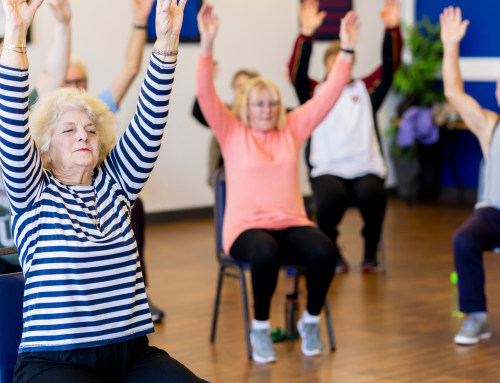What if growing older didn’t mean giving up the home you love? As Canada’s population ages, more and more older adults are saying the same thing: I want to stay in my home as long as I can. In fact, 96% of Canadians aged 65+ say they’d do everything they can to avoid moving into long-term care, according to recent government research.[i]
As part of our growing effort to help Canadians age well, we’re spotlighting how aging in place – safely and independently at home – is not just a personal preference, but a growing national priority that requires successful planning.
In this article, we’ll talk about healthy aging in place strategies that include physiotherapy, occupational therapy, and thoughtful home modifications and how all three work together to make you feel safer, stronger, and more supported in your home.
Table of Contents:
- Understanding the Risks – Aging Bodies, Changing Needs
- Fall Risks for Elderly at Home
- The Role of Occupational Therapy in Aging in Place
- Universal Home Modifications & Design
- Quick Tips for Aging in Place
- Conclusion
Understanding the Risks – Aging Bodies, Changing Needs
Canada’s population is aging rapidly. By 2030, seniors aged 65 and older will make up nearly one in four Canadians, a major demographic shift with far-reaching implications for health care, housing, and community support systems.iv As more people choose to age at home, it’s essential to understand the natural changes that come with aging – and how they can increase safety risks when proactive steps aren’t taken.
Physically, aging is associated with:
- Decreased muscle strength and bone density, which can lead to reduced balance and higher fall risk
- Slower reaction times, affecting one’s ability to prevent or recover from a trip or slip
- Changes in vision and hearing, which may affect depth perception, night vision, and hazard awareness
Cognitively, even healthy aging can involve:
- Mild memory lapses or slower processing speed
- Reduced multitasking ability, which can impact complex daily tasks like cooking or managing medications
These changes don’t happen overnight, but when ignored, they can result in accidents, injuries, or reduced independence. Falls are the leading cause of injury-related hospitalizations among Canadian seniors, and the majority of these falls occur at home.ii
Taking early preventative action – such as starting strength and balance exercises with a physiotherapist, working with an occupational therapist to adapt daily routines, or modifying the home environment – is key to reducing these risks.
Fall Risks for Elderly at Home
According to a recent Public Health Agency of Canada surveillance report, fall-related hospitalizations among older adults have increased by 47% between 2008/09 and 2019/20, even as standardized rates remained stable – underscoring that the growing number of older adults is driving more injuries at home.ii
Falls are now the leading cause of injury-related hospitalizations and deaths for Canadians aged 65 and older, disproportionately affecting women and those aged 80+. Importantly, 50% of falls resulting in hospitalization occur in the home, highlighting the critical role that home environment plays in safety and quality of life.iii
Early, interdisciplinary intervention – including physiotherapy, occupational therapy, and design-forward modifications – can drastically reduce risk and support independence.
The Role of Physiotherapy in Aging in Place
With falls as the leading cause of injury among older adults in Canada, there has never been a more important time to plan ahead, stay informed, and create a home that truly supports healthy aging.
Physiotherapy plays a critical role in helping older adults maintain mobility, independence, and confidence as they age at home. One of the most impactful contributions physiotherapists make is in fall prevention – a leading concern for older adults living independently.
Evidence-based, multicomponent exercise programs designed by physiotherapists – including strength training, balance exercises, and gait training – have been shown to significantly reduce both the rate and risk of falls among older adults living in the community.v
In Canada, falls account for nearly 85% of injury-related hospitalizations for seniors, and over half occur at home.ii Physiotherapists are uniquely trained to assess a person’s movement pattern, strength, and risk factors – providing customized programs to help them stay strong and steady.
These interventions don’t just reduce falls – they also improve confidence, increase activity levels, and help individuals stay connected with their communities. As part of an aging-in-place strategy, physiotherapy offers proactive, practical support that enhances both safety and quality of life at home.
The Role of Occupational Therapy in Aging in Place
While physiotherapy supports movement and strength, occupational therapy (OT) ensures that older adults can continue to engage meaningfully in their daily routines – safely and independently.
OTs are trained to assess both the person and their environment, identifying barriers to essential activities like dressing, bathing, meal preparation, or even hobbies. Through tailored interventions, OTs help individuals adapt tasks, use assistive devices, and apply energy conservation techniques to make daily life not only safer but more manageable.
Research supports the value of OT in fall prevention and aging in place. A systematic review published in the American Journal of Occupational Therapy found that OT interventions significantly reduce falls and improve functional independence, particularly when home assessments are part of care.vi Another review highlights that OT-led home modifications, such as installing grab bars or rearranging living spaces, directly reduce the risk of falls and hospitalizations in aging populations.vii
Beyond reducing fall risks through home modifications and adaptive equipment, OTs support older adults with strategies for managing medications, remembering appointments, and maintaining engagement in meaningful activities – especially those that combat social isolation. These aspects are often overlooked but are just as critical to long-term health and emotional wellbeing as physical safety.
By focusing on what matters most to each individual – whether it’s maintaining independence in self-care, continuing to garden, or preparing meals – OTs promote dignity and purpose. When paired with the physical foundation provided by physiotherapy, and the proactive home design strategies, occupational therapy becomes an essential pillar in the support system for aging in place.
Universal Home Modifications & Design
Aging in place is increasingly recognized not only as a personal preference – but as a public health priority as long-term care demand is expected to surge by 60% by 2031.[ii]
The most common aging in place home modifications include installing grab bars, motion-activated lighting, raised toilets, and seamless shower transitions. However, creating a home that supports aging in place can go beyond safety devices – to thoughtful design.
Companies that specialize in transforming typical family homes into spaces that are safe, stylish, and future-proof are becoming more popular. They can help their clients proactively plan ahead to prevent falls and maintain independence while preserving the aesthetic they cherish before a crisis occurs.viii
Some design companies incorporate principles of universal design – a strategy endorsed by the Canadian government to help Canadians of all ages and abilities live independently with ease and dignity. Universal design emphasizes features such as curbless showers, wider hallways and doorways, slip-resistant flooring, improved lighting, and easy-to-operate door hardware that enhance everyday life.
We invited Marilyn Chambers, the owner of Maraleash design solutions to share her expertise on universal design and how it can reduce the risk of falls while supporting daily function. “By integrating clinician-led assessments with thoughtful design practices, we collaborate closely with physiotherapists and occupational therapists. This approach ensures clinical recommendations and physical interventions work seamlessly within the living environment. Ultimately, we are creating a safe, functional, and supportive home that promotes aging in place without making the home look clinical,” says Chambers.
Quick Tips for Aging in Place
Aging in place doesn’t happen by accident – it takes planning, collaboration, and early action. Whether you’re planning for yourself or supporting a loved one, the best time to start preparing is before a health crisis occurs. Here are a few key steps to help you get started:
- Book a Home Safety or Mobility Assessment
Start with a professional evaluation from a physiotherapist or occupational therapist to assess falls risk, mobility limitations, and environmental hazards. These assessments help you prioritize changes that support safety and independence. You can learn more about fall prevention strategies through the Public Health Agency of Canada or Physiotherapy Canada.
- Start Small with Home Modifications
You don’t need a full renovation to make your home safer. Begin with simple recommendations from your OT like grab bars, better lighting, and slip-resistant flooring. If you’re looking for more, explore universal home design that combines function with beauty.
- Plan Financially and Practically
Explore potential government supports or tax credits related to come modifications. For example, the Canada Revenue Agency’s Home Accessibility Tax Credit (HATC) allows eligible seniors and caregivers to claim renovations that improve home safety and accessibility.
- Have Open Conversations
Talk with your family, caregivers, and healthcare providers about your goals for aging in place. Proactive communication makes decision-making easier later on and ensures that your priorities are understood and respected.
Taking these steps now can help reduce future stress, prevent injury, and ensure your home grows with you – not against you.
Conclusion
Aging in place is more than just a concept – it’s a powerful goal rooted in dignity, independence, and quality of life. With the right combination of physiotherapy, occupational therapy, and thoughtful home design, it’s possible to create safe and supportive environments that help older adults thrive in the place they know and love – home.
Our collaborative approach highlights how blending clinical expertise with tools, technology and home modification can make aging in place a reality. By thinking ahead and acting early, individuals and families can reduce fall risks, maintain mobility, and foster long-term wellbeing.
Whether you’re looking for a home safety assessment, rehab services, or practical home updates, we encourage you to reach out and explore your options. Together, we can build a future where aging at home is not only possible – but empowered.
References
[i] Clinic, C. (2023, December 12). Heart Rate Zones Explained. Cleveland Clinic.
[ii] Kowal, T. (2024, February 6). A Beginner’s Guide to Training Zones (VO2 Max) and Thresholds – Connect Physiotherapy & Exercise. Connect Physiotherapy & Exercise.
[iii] Can you sing while you work out? (2024). Mayo Clinic.
[i] Government of Canada. Final report of the Expert Panel: Supporting Canadians aging at home: Ensuring quality of life as we age – Canada.ca. Canada.ca. Published June 25, 2024. Accessed August 1, 2025. https://www.canada.ca/en/national-seniors-council/programs/publications-reports/aging-home.html
iii Public Health Agency of Canada. Seniors’ Falls in Canada Second Report.; 2014. Accessed August 1, 2025. https://www.phac-aspc.gc.ca/seniors-aines/publications/public/injury-blessure/seniors_falls-chutes_aines/assets/pdf/seniors_falls-chutes_aines-eng.pdf
iv Statistics Canada. Population Projections for Canada, Provinces and Territories: Section 1: Method and assumptions. Statcan.gc.ca. Published 2018. Accessed August 8, 2025. https://www150.statcan.gc.ca/n1/pub/91-520-x/2010001/part-partie1-eng.htm
vi Elliott S, Leland NE. Occupational Therapy Fall Prevention Interventions for Community-Dwelling Older Adults: A Systematic Review. American Journal of Occupational Therapy. 2018;72(4):7204190040p1-7204190040p11. doi:https://doi.org/10.5014/ajot.2018.030494
vii Brown T, Kidwell H, Priest P, Sellers A, Serino A, Spencer B. Occupational Therapy Interventions to Support Aging in Place: A Rapid Systematic Review. https://scholarworks.indianapolis.iu.edu/server/api/core/bitstreams/a754e9c9-66fa-4b48-a578-830a31ed5385/content
[ii] Public Health Agency of Canada. Surveillance report on falls among older adults in Canada – Canada.ca. Canada.ca. Published February 20, 2024. Accessed August 1, 2025. https://www.canada.ca/en/public-health/services/publications/healthy-living/surveillance-report-falls-older-adults-canada.html#a2.2
viii Maraleash. Maraleash Inc. Published 2025. Accessed August 1, 2025. https://www.maraleash.com/
Written by










